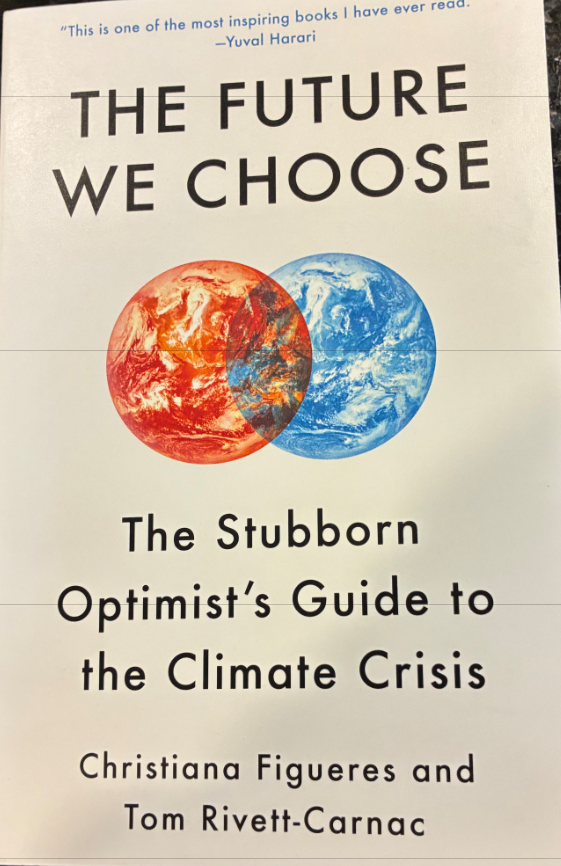Commentary
Sturgeon Moon

ACES leaders and Youth Corps team members
Editor’s note:
This is one in a continuing series of guest opinions about fostering environmental stewardship and leadership coordinated by ACES — The Alliance of Climate and EnvironmentalStewards.
Now past sunset the tide will flood until midnight. The softest zephyr of a breeze barely wrinkles a
reflected full moon, now just clearing the horizon. A shimmering alee’ of moonlight extends from
the dune upon which I stand, to an indigo sky, shattered for an instant by a sharp spark of
brilliance, and then calm again, a breaching Atlantic Sturgeon. This magnificent scene: a sturgeon
breaching by moonlight had occurred for many millions of years before human eyes had even
evolved, anywhere on planet earth.
Ten thousand years ago, People of the First Nations stood on Atlantic sand dunes. They too
witnessed the ascending full moon and that sharp spark of brilliance. Naturalist and paleontologist
Dr. Loren Eiseley, writes about First Peoples on these shores: “Scarcely had they stepped across
the old instinctive world when they began to create the world of custom. They moved in a patient
renewed orbit with the seasons... a structure, like nature, reasonably secure.” In other words,
these First Peoples had created their Garden of Eden.
Soon following the arrival of Europeans, the great Atlantic sturgeon, along with most of its
ancient oceanic ecosystem had been depleted. Extinction would certainly have been the fate of
the Atlantic sturgeon except, for now, being protected by law. Records dating from 1634 describe
sturgeon as “all over and best catching them in the river of Merrimacke, where much is taken,
pickled and brought for England, some to be 12, 14 and 18 foote long.” Sturgeon suffered
overfishing in the 20th century when they were harvested for eggs: caviar. By 1950 the sight of a
breaching sturgeon outside of Gloucester Harbor was deemed to be newsworthy enough for
publication in the Boston Herald. Now the sturgeon are back, in numbers just enough, to remind
us of their recent demise. Sturgeon in the Gulf of Maine rivers are listed as threatened; in other
U.S. rivers they are listed as endangered. In the Merrimack River, Haverhill is the only place where
sturgeon lay their eggs. Researchers say that for much of the year, sturgeons are looking for food
in the lower part of the Merrimack — from Amesbury to the Joppa Flats in Newburyport.
Future prospects for the bottom feeding sturgeon, despite its millions upon millions of
years of existence, are uncertain; ingesting mollusks by rooting in mud and sand that is littered
with oceans of plastic, washed overboard as waste from human consumption. Supermarket aisles
are walled with plastic packaging, only a small percentage of which is actually recycled. Even with
the best of intentions, plastic becomes waste because the chemical compounds from which much
plastic packaging is made are often incompatible for reuse. It would seem that there are only two
alternatives to eliminate plastic from our environment: demand smarter packaging and/or
reduced consumption and waste. The choice is ours to make. Again and again, Dr. Eiseley has
appealed to humanity’s sense of reason, to exercise a collective sense of self-discipline for the
sake of preservation, not just for Nature, but for Humanity as well.
So come stand on your own sand dune and scan the horizon. With patience and with luck
you too will witness a sharp spark of brilliance, perhaps that of the breaching sturgeon. Yet be
always mindful that only through reason and our collective sense of self-discipline, will your
children know that spark of brilliance on their future horizons. Teach them well and fear not the
future, rather prepare for the future. And know too that their children’s children, in just a brief
span of years to come, may or may not, ever have their chance to witness that spark of brilliance.
But know well, that if they do find that spark, they will have then inherited from us, the Garden of
Eden.
C. Peter Erickson lives on Plum Island and has long been an active steward for a healthy Merrimack
River.
Our Youth Corps asks you to think about the significance of this species and the future of our
planet. Please provide any thoughts about a project or practice that could contribute to a healthier
environment. Send us a note at acesnewburyport@gmail.com . To learn more about ACES and its
Initiatives, visit https://www.aces-alliance.org/
.svg)


